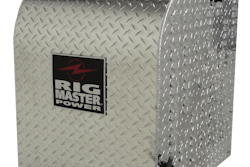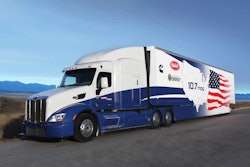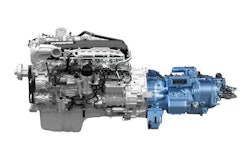Without a trailer, a tractor is meaningless. A trailer, the argument could be made, is the piece of equipment that actually brings revenue in for a fleet. While it’s easy to dismiss a dry van as simply a “box on wheels,” the reality of trailer design is a never-ending series of compromises between cargo space and unit weight.
Today, as savvy fleet managers understand that any money saved in fuel costs adds to their bottom line, new aerodynamic aspects are being added to the trailer design mix. Also, new technologies – such as telematics, GPS tracking and real-time logistics information – are pushing trailer OEMs to reevaluate longstanding designs and look at how trailers will be used in the future in a new light.
Strick Trailers in 2011 was selected as Daimler Trucks’ trailer partner for its 2015 SuperTruck project, a five-year development process in conjunction with the U.S. Department of Energy and other leading industry manufacturers and suppliers. Daimler’s highly sophisticated and sleek vehicle was showcased in the Freightliner booth at this year’s Mid-America Trucking Show.
“The opportunity to work with the best engineering minds in the business has been a privilege and a gift,” says Charlie Willmott, chief sales officer with the Strick Group. “We have learned much about what to look for and where to begin. There is no question that the trailer is the ‘Final Frontier’ for major aerodynamic improvement in the combined truck-trailer configuration.”
Willmott says Strick now is focused on key areas where the biggest improvements can be made quickly and easily. “It is a lengthy, expensive and full-enterprise process of innovation, design, build, test and refinement, but the end result will be far superior to today’s van products,” he says.
Wabash National operates under the belief that it has a responsibility to provide equipment that helps its customers be as successful as possible in today’s ever-changing operating environment, says Dick Giromini, president and chief executive officer of Wabash National.
“That includes seeking ways to continually enhance reliability, performance and durability, all while assuring the lowest total cost of ownership,” Giromini says.









